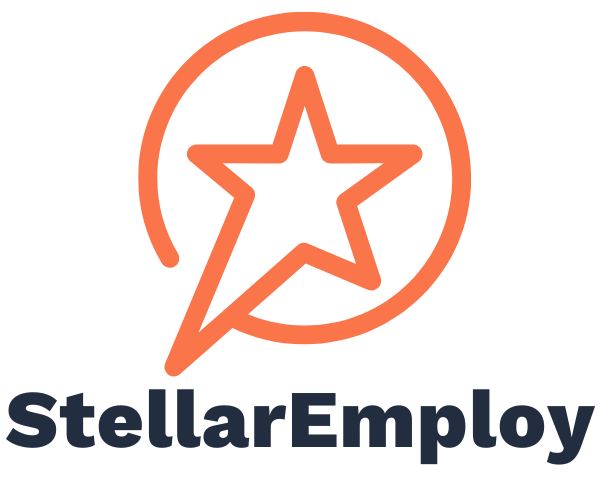Implement these two concepts for better, faster hourly hiring
If you believe the game of high volume recruitment is similar to salaried recruiting, think again. Recruiters in the hourly space face unique pressure to fill hundreds of positions every week while ensuring effective hiring decisions. Therefore, high volume recruitment is a process that is best viewed and managed as a funnel, a common practice in sales and marketing. By managing the process as a funnel, recruiters can have a holistic picture of their process and easily introduce critical improvements. This is even more critical as hiring goes digital due to COVID-19.
Above: Example 5-month recruitment funnel for company with ~300 hourly employees
StellarEmploy’s High Volume Recruitment (HVR) 2.0 framework uses technology to supercharge recruiter productivity and delight candidates throughout the application experience. By automating non-value added activities and providing insights, HVR 2.0 can aid in making better, faster hiring decisions. The key components of this movement are process automation and data:
Above: High Volume Recruitment 2.0 requires implementing process automation and leveraging internal data
“The fascinating part of this AI revolution is how automation is actually pushing the workforce to become less techy and more human.”
Let’s dive into specific use cases where automation and data provide significant value to high volume recruitment.
1) Process Automation gives recruiters control of their time
Automation can be used to get rid of many non-value added tasks, double recruitment productivity, and ensure better hiring outcomes. Activities like sourcing, screening, scheduling, and communications can be completely automated so recruiters can focus on the people-centric work. Imagine a world where with a single click your openings are published across multiple job boards and only candidates with the right fit are automatically scheduled to have an interview.
Sourcing can be a time intensive task when you have to do it manually. Fortunately, recruiters in the high volume space can take advantage of technology. Most job boards have an API that makes it easy to list and delist jobs. Once you have a job description, a publish option in your ATS should be the only action required to publish a job across multiple boards and start getting candidates to fill the top of the funnel.
Screening is a critical practice for qualifying candidates based on certain requirements and criteria. At a basic level, screening can confirm requirements like age, work authorization status and shift availability. A more advanced scenario might include AI algorithms in charge of matching them with the right positions. Those qualified can automatically transition to the next stage like a phone or in person interview. Those unqualified can be gently rejected.
Scheduling interviews manually is a time intensive task. There is a better way to get the job done. Instead of calling every candidate to find a time to interview, your recruitment tool should give you plenty of options to fully automate this task. A best practice is to have a preset interview schedule. Time blocking to run interviews every week and letting qualified candidates self-schedule saves valuable time. It also provides a better experience to applicants that want to know right away if they have a chance to be considered for the position. This way your calendar will be automatically filled on your behalf. When combined with automated screening, you can expect to only have qualified candidates as part of your interview roster.
Communications can be automated as well so recruiters can personalize messaging at every point of the process no matter how many applications they have to deal with. According to a recent article published by The Balance Careers, volume is one of the reasons why recruiters find it challenging to effectively communicate throughout the application process. The ideal recruitment tool should let recruiters compose email and SMS templates to fully automate status updates, reminders, and interview changes as they move candidates along the funnel.
2) Data collected provides clues about ideal candidates
If process automation is the way to give recruiters time to engage with candidates and run better interviews, data is the enabler for making better hiring decisions.
Turnover is a huge problem in the hourly space. About 60 million Americans work in hourly jobs. Over 50% quit within 90 days and enterprises spend $60B refilling these roles 4X every single year. With hundreds of new data points collected every day, high volume recruitment is a process where AI can reduce turnover.
Data can be used to understand hourly jobs. As Lou Adler points out in his “Performance Based Hiring” methodology, an effective recruitment process starts with a deep understanding of what a great hire means and the specific requirements of the position. This is a task that is normally run by field experts or experienced managers that have a clear understanding of the nature of the job.
You can also learn it by surveying existing employees and by using AI to analyze their skills and preferences without bias, which is StellarEmploy’s approach. Understanding the most relevant skills for doing a specific job can be introduced into the application process with a screening algorithm to automatically match candidates with the right positions. Data is the way to transition from hiring by guessing to hiring based on insight and fit.
Above: StellarEmploy platform: Fit based screening
In this “new normal,” society’s perception has shifted to see the value that frontline employees provide day to day to keep entire industries up and running. Recruiters have the challenge and unique opportunity to hire great employees while being productive enough to meet demanding hiring quotas. HVR 2.0 combines automation and data to help recruiters double their productivity and increase the effectiveness of their recruitment process.
Carlos Montoya is the CTO and CoFounder of StellarEmploy.



